Dynasty Warriors has been around for over twenty years and is the most consistent hack-and-slash franchise not named Devil May Cry. The series, almost always developed by Omega Force and published by Koei and later Koei Tecmo, normally consists of the player acting as a one man army and mowing down fields of mooks in 1-vs-100 sandbox-sized battlefields.
Based on the Chinese classical literary novel Romance of the Three Kingdoms, which is itself a highly fictionalized version of the real life Three Kingdoms War, every single main game in the series has the same exact story of retelling signature scenes and battles from the novel.
Each new installment introduces more and more playable characters and adds to the depth that each period of the hundred year conflict can explore, all while mostly mashing the same buttons repeatedly. The Empires sub-series is the most different, adding layers of strategy and tactics to all sorties.
There is an army of games under the Dynasty Warriors name, but someone’s got to slash their way through all of them and see how they stack up against each other, and that’s the duty we have sworn to.
A set of ground rules before we go off and join the vanguard: every game in the franchise is so similar in terms of storytelling, characters, and gameplay, that the critique of them being repetitive and “button mashing” will not be used unless there’s a significant difference. Also, because so many Dynasty Warriors games receive roughly identical critical review scores and can be very similar, in order to properly rank them, several of the critiques do get nitpicky.
One final set of clauses: every game with the “Dynasty Warriors” name is eligible unless there isn’t significant enough gameplay differences from the way the main numbered installments play, as well as needing to boast a cast of characters that contain most or all of the Dynasty Warriors champions themselves. Therefore, the Warriors Orochi crossover games make it in, but not Warriors All-Stars, Dynasty Warriors Advanced, or the Dynasty Warriors: Gundam series.
Do not pursue Lu Bu and instead feel the power of our magic as we rank the twenty-three Dynasty Warriors games from worst to best.
Dynasty Warriors Ranked
23. Dynasty Warriors 6

Developer: Omega Force
Publisher: Koei
Platform(s): PC, PS3, Xbox 360
The most reviled and negatively reviewed game in the franchise, Dynasty Warriors 6 starts off with the sin of being the first game in the series to subtract characters.
The characters that it did keep all underwent some kind of revision, especially in the design department, which also put off fans who were so used to what the previous five iterations had established for their favorite characters.
The biggest no-no is the game overhauled the weapon and combat system to the “Renbu System,” making the signature hack-and-slash combat an absolute chore that never worked properly. The logical conclusion of the “press one button repeatedly to win” to a fault, the Renbu System requires players to keep tapping and never be interrupted – an impossible task given the hundreds of mooks and officers surrounding the player.
It’s notable that this is the only game in the series since they started creating expansions or season passes to never receive either.
22. Dynasty Warriors DS: Fighter’s Battle
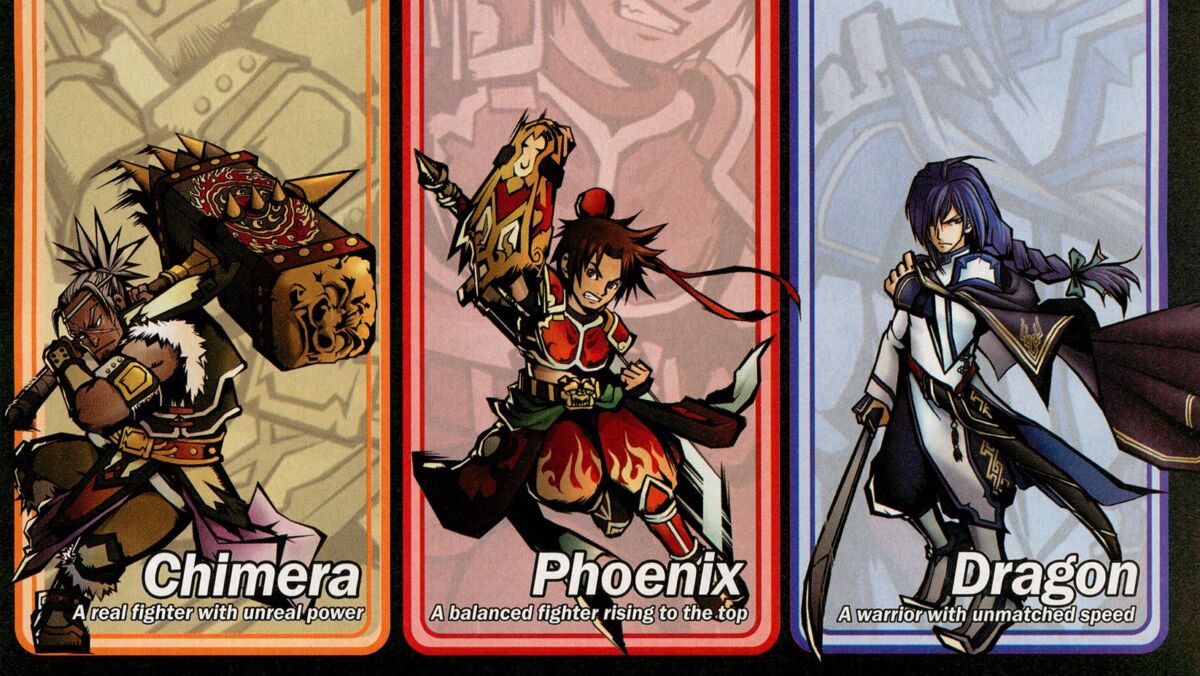
Developer: Omega Force
Publisher: Koei
Platform(s): DS
A turn-based card battle game, Dynasty Warriors: Fighter’s Battle gives an incredibly different look at Ancient China’s legendary warriors.
Aesthetically, Fighter’s Battle is the closest Dynasty Warriors has ever come to trying to appeal to a younger crowd, as the game’s art and character designs look like they wouldn’t be out of place in a Saturday morning cartoon or the Pokémon anime.
That said, the game’s mechanics are terribly shaky, the story is strange, and overall doesn’t have much of the appeal that draws most to the series. The card battles replace mowing down huge armies , which is understandable for a handheld system, but it leaves none of the gameplay satisfying.
21. Dynasty Warriors 9 Empires

Developer: Omega Force
Publisher: Koei Tecmo
Platform(s): PC, PS4, PS5, Xbox One, Xbox One Series X & S, Switch
The most recent game on this list, Dynasty Warriors 9 Empires takes the open world concept of the base Dynasty Warriors 9 and makes it a bit worse. The emptiness of the main game returns with, unbelievably, even less in it, the lifelessness of the models is also back, and to complete the trifecta, the graphical glitches and issues that plagued the original on release rear their ugly head again.
Hiding in the rubble is the addictive Empires style strategic territory battles, but every other Empires title does it better and isn’t as insulting.
20. Dynasty Warriors 9

Developer: Omega Force
Publisher: Koei Tecmo
Platform: PC, PS4, Xbox One
Speaking of which, Dynasty Warriors 9 brought the series into the open world genre, but unfortunately, said world isn’t filled with anything interesting, if anything at all. In addition, the weapons system again committed DW6’s fatal flaw and got overhauled to make everyone’s movesets clones attached to the weapons, removing individuality from all 90+ characters.
The overall game feels lacking many of the things that make these games fun, but thankfully, it has gotten better over time thanks to multiple patches. That does not, however, excuse Koei Tecmo giving it no less than three uninspiring season passes.
19. Dynasty Warriors

Developer: Omega Force
Publisher: Koei
Platform: PS1
The original Dynasty Warriors game had nothing to do with large-scale battlefields, but was instead a neat weapon-based fighting game not unlike Soulcalibur. Much like its direct sequel, this game got positive attention for being something out of the norm at the time.
Graphically, the game looks similar to the PlayStation era Tekken titles and the fighting system is still pretty good. This holds a unique spot on this ranking because, frankly, it’s in a completely different genre than everything on this list and even by modern standards, it isn’t a terrible game, just outclassed.
18. Dynasty Warriors: Strikeforce
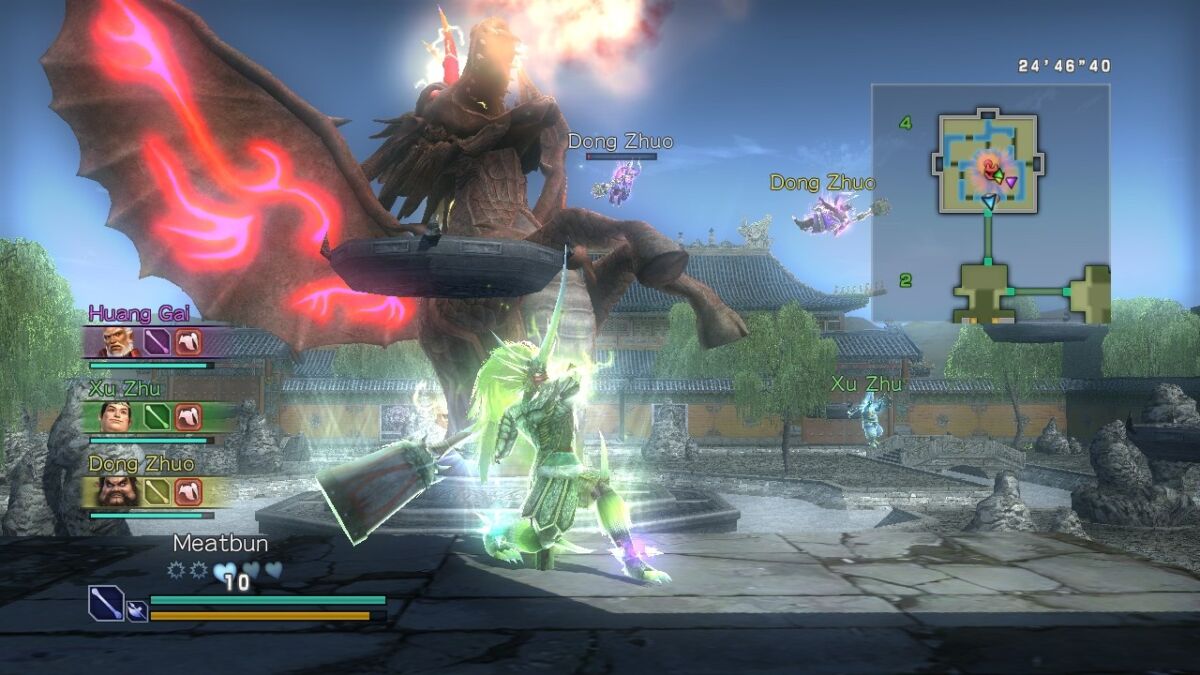
Developer: Omega Force
Publisher: Koei
Platform: PSP, PS3, Xbox 360
The DW franchise at its most anime, Dynasty Warriors: Strikeforce was perhaps a few years before its time. That’s because this PS3-era game revolved around online multiplayer hack-and-slash that had up to four players at a time go on raids to re-enact Romance of the Three Kingdoms not through a campaign, but rather hundreds of quests.
The anime factor comes in with every character being able to power up to an “Awakened” form, which makes them glow, gain immense stat boosts, and changes their design to look like something out of a Gundam x Dragon Ball Z crossover that can even fly. It wasn’t everyone’s cup of tea, however, thanks to muddy visuals and it not being single-player focused, the latter of which would make the game very difficult to go back and try to play today considering the servers, while still active, don’t have much activity going on.
17. Dynasty Warriors 2

Developer: Omega Force
Publisher: Koei
Platform: PS2
The very first Dynasty Warriors game to establish the series standard battlefields where you mow down hundreds of foes, Dynasty Warriors 2 released on the original PlayStation to one of the best overall receptions any game in the series has ever had. The game was lauded for pushing the limits of being able to render seemingly infinite enemies on the screen at once, as well as the incredibly unique playstyle.
By today’s standards, Dynasty Warriors 2 is obviously dated, but it’s still an interesting game to see just where the roots of this seemingly never-ending series were born. Like its predecessor, it honestly ranks this low not because it’s terrible, but because it’s hard for it to compete or compare with the escalation and evolution of the franchise.
16. Dynasty Warriors 6: Empires

Developer: Omega Force
Publisher: Koei
Platform: PSP, PS3, Xbox 360
The Renbu System was so bad that the Empires iteration of DW6 completely did away with it in favor of the previous, more traditional system. That alone makes this game leaps and bounds better than its base game, but changing an entire battlefield style between games doesn’t make it nearly as smooth or intuitive as every other game, especially when everyone also got new weapons specifically designed for said dumped system.
This installment did leave lasting changes to the Empires games, such as giving players the chance to be a freelance warrior, swearing brotherhood, strategy cards, and even a special action to switch allegiance mid-battle. But the rough re-implementation of the classic combat mars an otherwise serviceable strategy game.
15. Warriors Orochi

Developer: Omega Force
Publisher: Koei
Platform: PC, PSP, PS2, Xbox 360
The first game in the rankings outside the mainline Dynasty Warriors canon, Warriors Orochi introduced a new parallel universe into the series that saw the heroes of Ancient China meet up with the heroes of Feudal Japan.
Dynasty Warriors crosses over with its sister series, Samurai Warriors, and features all playable characters from Dynasty Warriors 5 and Samurai Warriors 2, along with some new faces, most notably the series antagonist Orochi, who is responsible for combining the two worlds.
A highly experimental game, Warriors Orochi is really just a giant love letter to both featured franchises and an excuse to have legendary warriors from completely different eras face off. This PS2 era game is crunchy but cool, though its place on this list is also due to large parts of it being retconned so this one-off crossover could become an entire new series on its own.
14. Dynasty Warriors 8: Empires

Developer: Omega Force
Publisher: Koei Tecmo
Platform: PC, PS4, PS3, PS Vita, Xbox One, Switch
Dynasty Warriors 8 was well-received by fans of the series, which made the Empires iteration one to really look forward to. Unfortunately, Dynasty Warriors 8: Empires is marred by predatory changes and broken promises. Several characters have weapon specialties changed from the base game in an effort to encourage players to buy DLC and the game doesn’t have an English dub, despite previous announcements that it would.
In spite of this, DW8: Empires does have several great improvements on the Empires gameplay, such as the ability to have children from marriage, revamping the Fame system, and having some of the coolest DLC scenarios and edit characters in the series.
13. Dynasty Warriors NEXT

Developer: Omega Force
Publisher: Koei Tecmo
Platform: PS Vita
A launch title for the PS Vita, Dynasty Warriors NEXT plays mostly the same as a traditional Dynasty Warriors game with the exception of being saddled with a mountain of gimmicks.
By virtue of being made specifically for the Vita, Omega Force seems to have used it as a dumping ground for all their experimental features to see what floated to the top. Strategy cards, ambush minigames, pursuit and chase mini-maps, touch screen/pad capabilities, “Accidental Battles,” and a lack of a visible health bar are just some of the wonky gimmicks the game tried out.
That said, because NEXT is based on the exceptional Dynasty Warriors 7: Xtreme Legends, the gameplay is some of the most fun in the series, if you can tolerate the gimmicks that can become annoying very quickly. It’s still one of the best Dynasty Warriors attempts at a handheld title (and this is including some of the more recent Switch ports).
12. Dynasty Warriors: Godseekers

Developer: Omega Force
Publisher: Koei Tecmo
Platform: PS4, PS3, PS Vita
A Dynasty Warriors tactical RPG filled with weird fantasy elements, Dynasty Warriors: Godseekers is the best forgotten game in the Dynasty Warriors franchise. A much different foray into the Three Kingdoms Era, Godseekers follows series poster boy Zhao Yun as the protagonist as he tries to recruit members to his side alongside a pair of original characters, Lixia and Lei Bin, who are clearly from some cyberpunk future.
Because it’s focused on one character and therefore faction, it hurts the game’s scope, not to mention the fantasy elements are awkward and some characters were cut out. Nonetheless, the tactical gameplay itself is unique to the series and done surprisingly well.
Godseekers’ release got lost in the shadow of the announcement of Dynasty Warriors 9 which, looking back, may have been a great injustice.
11. Dynasty Warriors 7: Empires
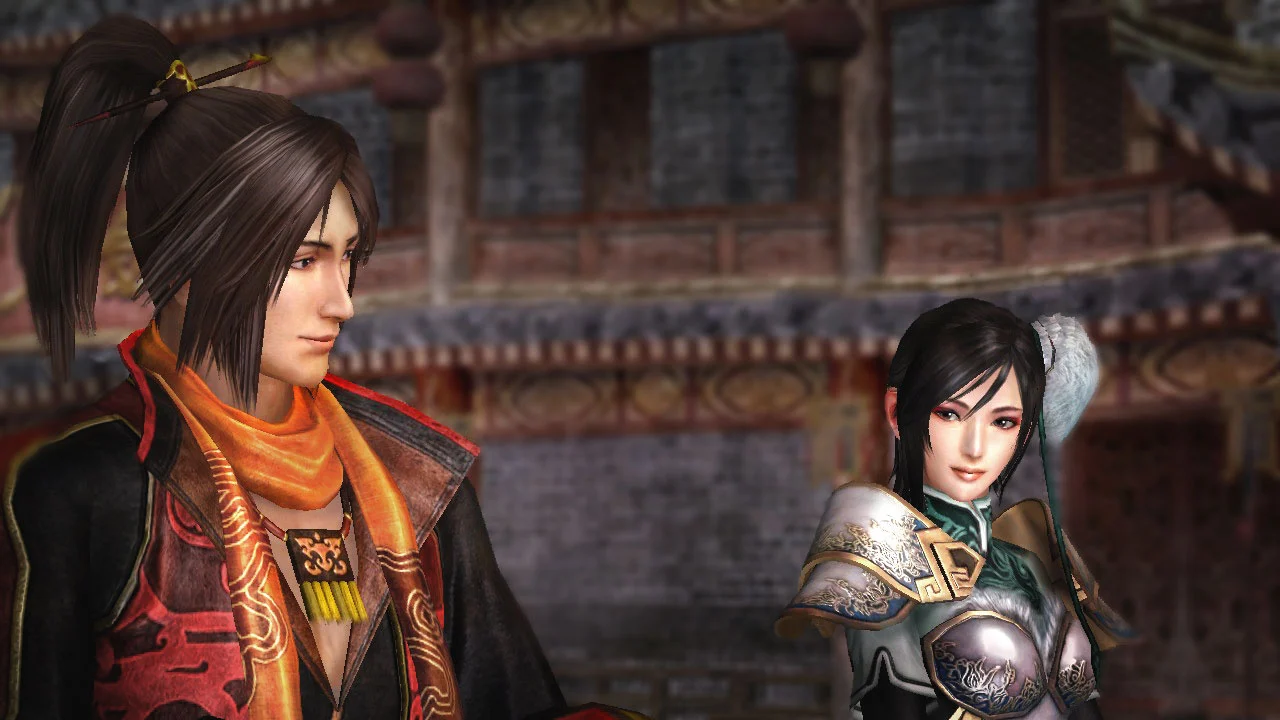
Developer: Omega Force
Publisher: Koei Tecmo
Platform: PS3
Another undubbed Empires version, Dynasty Warriors 7: Empires introduced a bevy of updates and changes to the Empires gameplay that are mainstays to this day, including the aforementioned Fame system that determines how your citizens and soldiers see you.
The lack of a Free Mode hurts the replayability, but considering no Empires save will be the same anyway, that isn’t the worst problem. DW7: Empires is actually a super solid game pushed lower on our list for other titles just being better as opposed to it having that many downsides. The worst the game has to offer is showing that the series still hadn’t quite recovered completely after getting the Renbu system out of its, uh, system.
10. Warriors Orochi 2

Developer: Omega Force
Publisher: Koei
Platform: PSP, PS2, Xbox 360
Orochi returns to warp the Dynasty/Samurai realities again, but this time, the crunchiness of the original is streamlined to be much more interesting, as has Orochi himself. Warriors Orochi 2 has the faction-centric stories for each side yet again, but this time, players get the option to play as Orochi’s faction in a prequel to the events of the first game.
On top of general improvements, Dream Mode is full of fanfiction stages for the true nerds, while Survival Mode is essentially a fighting game mode that harkens back to the original Dynasty Warriors. WO2 isn’t the cleanest game, but you can see the love from the developers bursting at the seams.
9. Dynasty Warriors 3
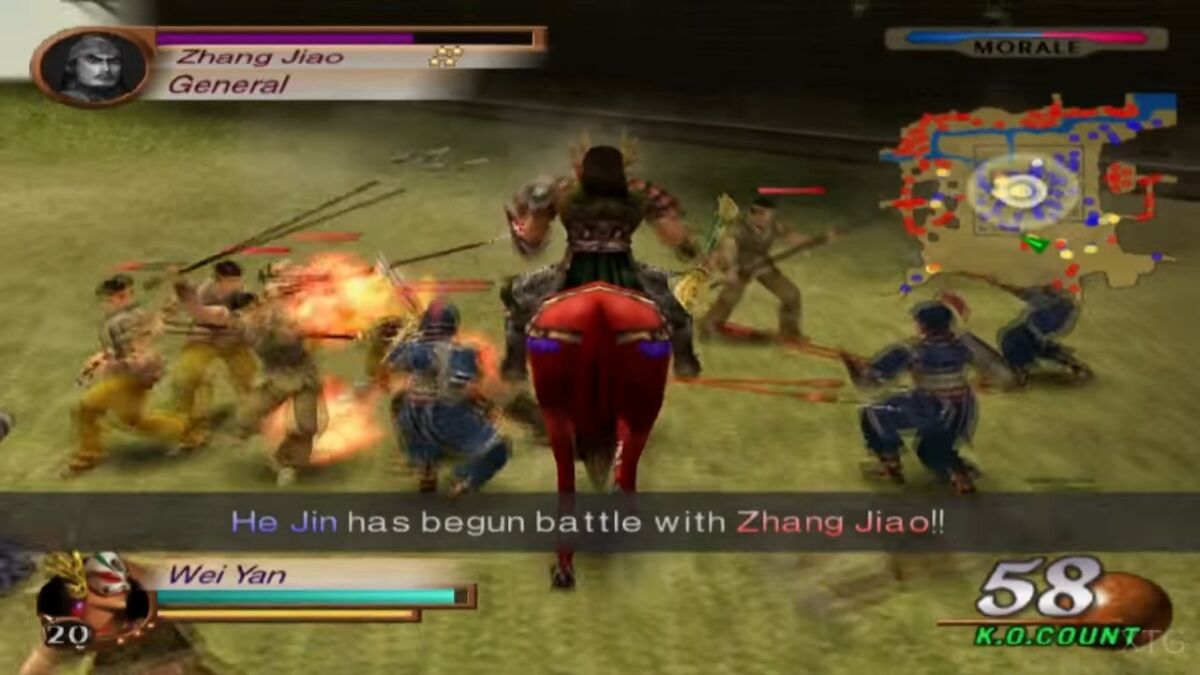
Developer: Omega Force
Publisher: Koei
Platform: PS2, Xbox
The most iconic game in the entire franchise for good or ill, Dynasty Warriors 3 and its Xtreme Legends expansion were where most Western Dynasty Warriors players first got introduced to the series. This installment isn’t so much a better game than all the titles before it, but it certainly has the most charm and amusement factor of any game in the series.
Whether it’s the dawn of the “Do Not Pursue Lu Bu” meme, the absolutely hysterical voice acting, or everything in between, DW3 is a weird joy to experience. This is also on top of enjoyable gameplay and the first real semblance of balance in the franchise.
Dynasty Warriors 3 is an incredibly silly game, but all of its strange elements come together to make an experience greater than the sum of its parts.
8. Warriors Orochi 4: Ultimate
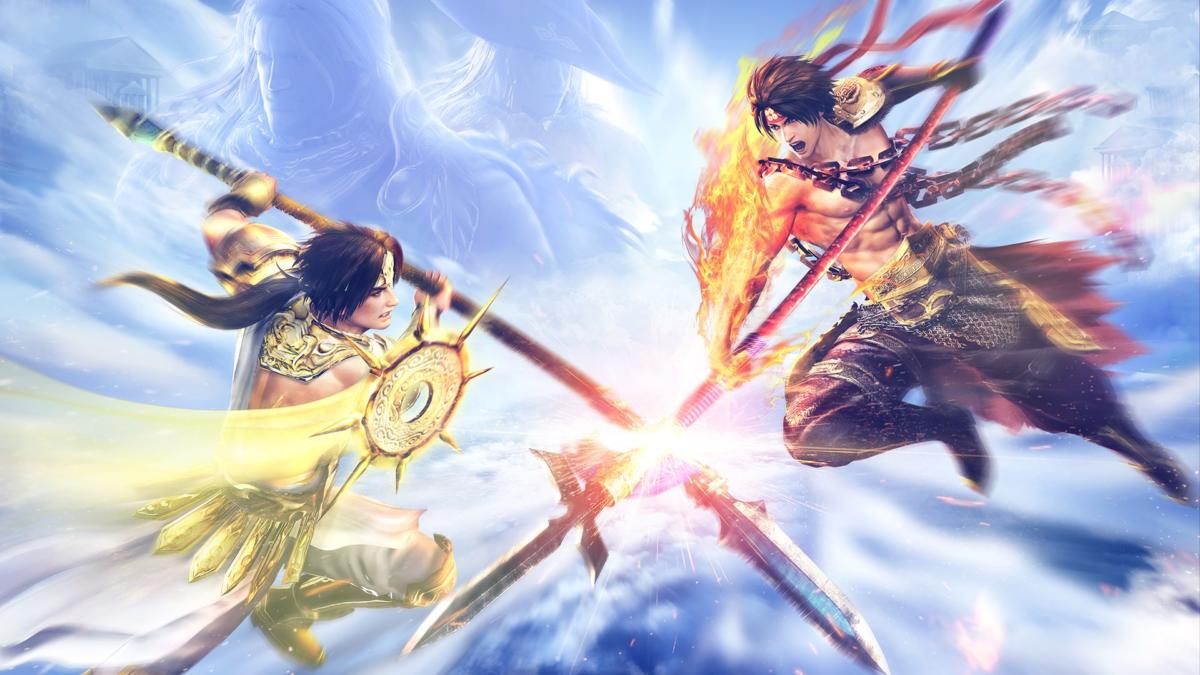
Developer: Omega Force
Publisher: Koei Tecmo
Platform: PC, PS4, Xbox One, Switch
Despite Warriors Orochi 3: Ultimate being promoted as the finale of the Warriors Orochi spin-off series, including the very soul of series antagonist Orochi being set to rest, somehow, the timelines get complicated again. This time, it’s actually the doing of some Greek mythology characters, Zeus, Athena, Ares, and Perseus, who are responsible for this new world and adventure.
Warriors Orochi 4: Ultimate loses some of what makes the Orochi games great by being a little light on the love and charm side, but it makes up for it by improving a bevy of features from the much lauded WO3: Ultimate, even if the story is all over the place. The Ultimate expansion actually completes the entire story and adds lots of anti-frustration and fan-requested features from previous games, finding the fun the vanilla version was missing.
The Ultimate edition did a lot of the heavy lifting, as vanilla Warriors Orochi 4 wouldn’t be a top ten game without it.
7. Dynasty Warriors 4: Empires

Developer: Omega Force
Publisher: Koei
Platform: PS2
Speaking of the Dynasty Warriors 4 era, Dynasty Warriors 4: Empires was the first ever Empires installment and it made quite the impact on the franchise. Introducing simplified maps and features from parent series Romance of the Three Kingdoms (the Koei real-time strategy game, not the historical novel), including a Politics phase and, in general, the ability to craft your narrative from the very start to unite China how you see fit.
It doesn’t allow much control over what policies you have the option to enact every turn, however, so you’d better get some strategists in-house if you want to have the best time. Combining this unique spin on the series that makes the massive roster and lore infinitely easier to digest with the excellent mechanics of Dynasty Warriors 4 make it a series classic.
6. Dynasty Warriors 7

Developer: Omega Force
Publisher: Koei
Platform: PC, PS3, Xbox 360
Completely ditching the Renbu system and returning to the ways of old, Dynasty Warriors 7 upped the ante by introducing a fourth faction into the Three Kingdoms story: the Jin Kingdom, who historically were the ones to reunite the land and end the entire war.
DW7 introduced a bevy of new and interesting characters all at once without any of them tripping over each other. This could also explain why the story mode went entirely faction based and not based on individuals. After the huge misstep that was DW6, this game went a long way to righting the ship and did so in spades.
Dynasty Warriors 7: Xtreme Legends improved several functions, most notably money grinding, from the base game. The addition of Legends Mode to give a better look at those not given a Story mode and have loads of what-if scenarios is also a huge plus, as well as the return of the fan favorite Challenge mode. The biggest boon, though, is the introduction of the cold, calculated, and vengeance fueled Wang Yi, who still ranks among the series’ most popular characters.
5. Dynasty Warriors 4

Developer: Omega Force
Publisher: Koei
Platform: PC, PS2, Xbox
After the strange but surprisingly positive reception to Dynasty Warriors 3, Omega Force and Koei went to task on taking all that charm and channeling it into something that would deliver as a complete gaming experience and not just a novelty.
If nothing else, Dynasty Warriors 4 and its Xtreme Legends expansion introduced several critical battle mechanics and features that the series still uses today – mass-clearing charge combos, weapon and item leveling, jumping charges, no rankings for mounts, deeper equipment pools, a camera that doesn’t go haywire when jumping – too many to list.
Another key thing introduced was the Legends Mode in Xtreme Legends, which would become a mainstay for nearly every subsequent XL release in order to not just delve into characters who might not get much story screentime, but to allow players to rampage through the best stages from previous games in the series.
All this combined with an English dub cast that took their assignment much more seriously makes Dynasty Warriors 4 the spiritual and developmental anchor of the entire series that every title thereafter would take from.
4. Dynasty Warriors 5

Developer: Omega Force
Publisher: Koei
Platform: PS2, Xbox
Dynasty Warriors 4 introduced a huge number of elements to reshape the franchise, but Dynasty Warriors 5 and its Xtreme Legends expansion helped perfect them. In addition to some quality of life features, this set of games introduces a bonus set of combos to the moveset, adding the entire “evolutionary attack” chains from the Samurai Warriors games.
The best change of all is that the story mode switches back from the faction-based campaigns to individual ones, meaning every single character gets their chance to shine and be explored with all the improvements to all the systems from Dynasty Warriors 4.
DW 5: Xtreme Legends continued to improve from the last two games, but gives us an exclusive mode that hasn’t been brought back in the form of Dream Mode. In this mode, you create a character and have them serve under one of the famous Dynasty Warriors characters and try to rise through the ranks with them basically serving as your mentor, complete with RPG features. Not until the later Empires games did something like this show up, but it’s an incredibly interesting concept. All of these elements together create the best numbered main installment in the franchise.
3. Dynasty Warriors 8

Developer: Omega Force
Publisher: Koei Tecmo
Platform: PC, PS3, PS4, PS Vita, Xbox 360, Xbox One, Switch
Improving on the soft-reset that Dynasty Warriors 7 provided, Omega Force went back to basics by taking some of the best features from the era of Dynasty Warriors 4 and integrating them with a new art and graphics system they had to build from the ground-up. It also implemented a leveling system similar to the ones in the Warriors Orochi games, making Dynasty Warriors 8 a genuine attempt at making up for past mistakes by using past successes.
The best feature, though, is that finally, everyone’s back; all the characters cut from DW 6 finally make their way back to the main series along with some new (mostly Jin) faces. Despite some more English dub corner-cutting, DW8 signaled the series true return to form.
Dynasty Warriors 8: Xtreme Legends takes the fantastic improvements of its base game and tweaks them even more, allowing for several notable characters who weren’t really given a chance to shine in the faction-based story mode the chance to break out. This is exemplified by none other than the big beefy box art boy himself, the legendary Lu Bu. He stars in his own campaign, including both a historical and fictional route.
This intimate look at Lu Bu and his desires is a key selling point, but the changes made to Ambition Mode make it really stand out, as it basically acts as a possibly more addictive version of the Empires games within another game where you’re free to unite the land however you want, even if it is a bit of a grindfest. The Definitive Edition released on the Switch includes all the DLC for the game and contains over 100+ hours of content and is, for good reason, the best reviewed title in the franchise, according to Metacritic.
2. Dynasty Warriors 5: Empires

Developer: Omega Force
Publisher: Koei
Platform: PS2, Xbox 360
This fan-favorite Empires game aligns with what many consider the peak of the franchise, as Dynasty Warriors 5: Empires is the best version of all the improvements of DW 4 and 5. The roster is the perfect size, players have much more control over their tactics and policies, and the gameplay is definitely the most fluid of the PS2 era games.
The smaller scope of the game also helps tremendously, perfecting the tone from the first Empires for the quick-and-satisfying territory battles that would be the backbone of the sub-series. The graphics and presentation are crisp, and it helps that this was the first game in the franchise to be released on the Xbox 360, allowing it to run on a more powerful console than usual.
There is the prevalent idea about the Dynasty Warriors franchise that the Empires games are the best of the entire lot, which almost certainly originates from the excellent DW5: Empires. No Empires title since, however, has come close to replicating anything about its success, presentation, or fun. That aside, to us and many other die-hard Dynasty Warriors fans, Dynasty Warriors 5: Empires is the single best game bearing the Dynasty Warriors name.
1. Warriors Orochi 3: Ultimate

Developer: Omega Force
Publisher: Koei
Platform: PS3, PS4, PS Vita, Xbox One, Switch (Japan only)
Warriors Orochi 3: Ultimate is the supposed finale of the Warriors Orochi games. This time around, the Hydra, the manifestation of all of Orochi’s raw power, is born and kills nearly every single character across the Dynasty and Samurai Warriors games in the prologue. Only three characters total survive the onslaught and have to lean on members of the Mystic Realm and their time control powers to save all their colleagues.
In addition to boasting all characters from Dynasty Warriors 7 and Samurai Warriors 3, the game also features a selection of guest fighters, pulled into the warped space and time from all over. This includes Joan of Arc, Achilles, and even Ninja Gaiden’s own Ryu Hayabusa and Sophita Alexandra of Soul Calibur. Despite the enormous roster, everyone has a distinct moveset and support conversations that show these characters are more than fighting, war, and magic.
The way you recruit everyone and progress the story is the best part, though. Not only is every character on the same side and no longer separated into factions, but the player must travel back in time to recruit all the warriors they wish like a game of timey-wimey Pokemon.
Ultimate once again does even more by providing two extra stories: a post-Hydra arc surrounding Tamano, the bloodthirsty temptress who breaks free from the Killing Stone (which, lucky for us, also just broke open in real life), and one that takes place hundreds of years ago, showing us the tragic events that lead to the creation of Orochi.
All of this makes Warriors Orochi 3: Ultimate the single best “Warriors” style game to ever be made by Koei Tecmo and Omega Force and absolutely at the top of the heap of every game under the Dynasty Warriors umbrella.
READ NEXT: Ranking the Metroid Games From Worst To Best
Some of the coverage you find on Cultured Vultures contains affiliate links, which provide us with small commissions based on purchases made from visiting our site.

